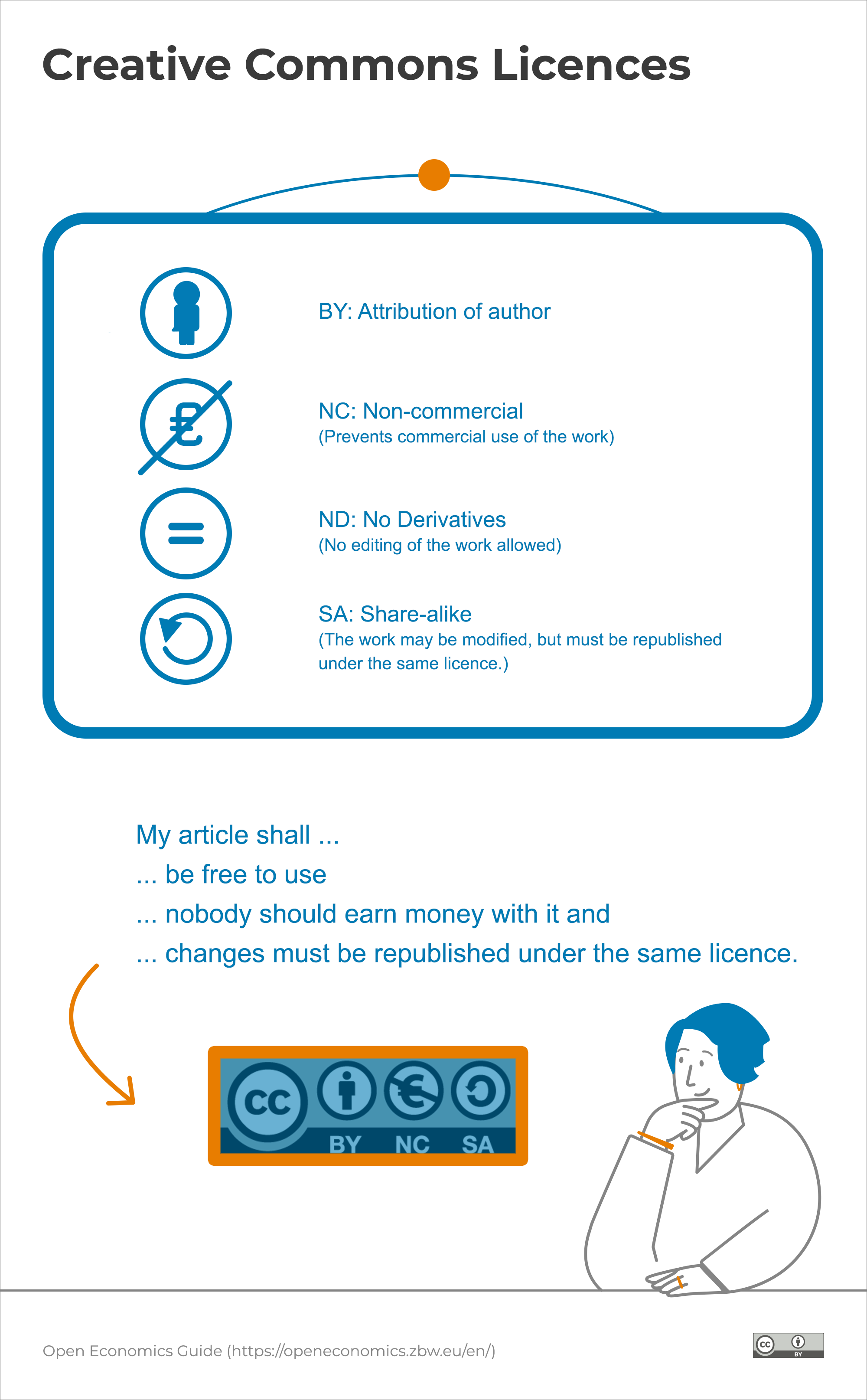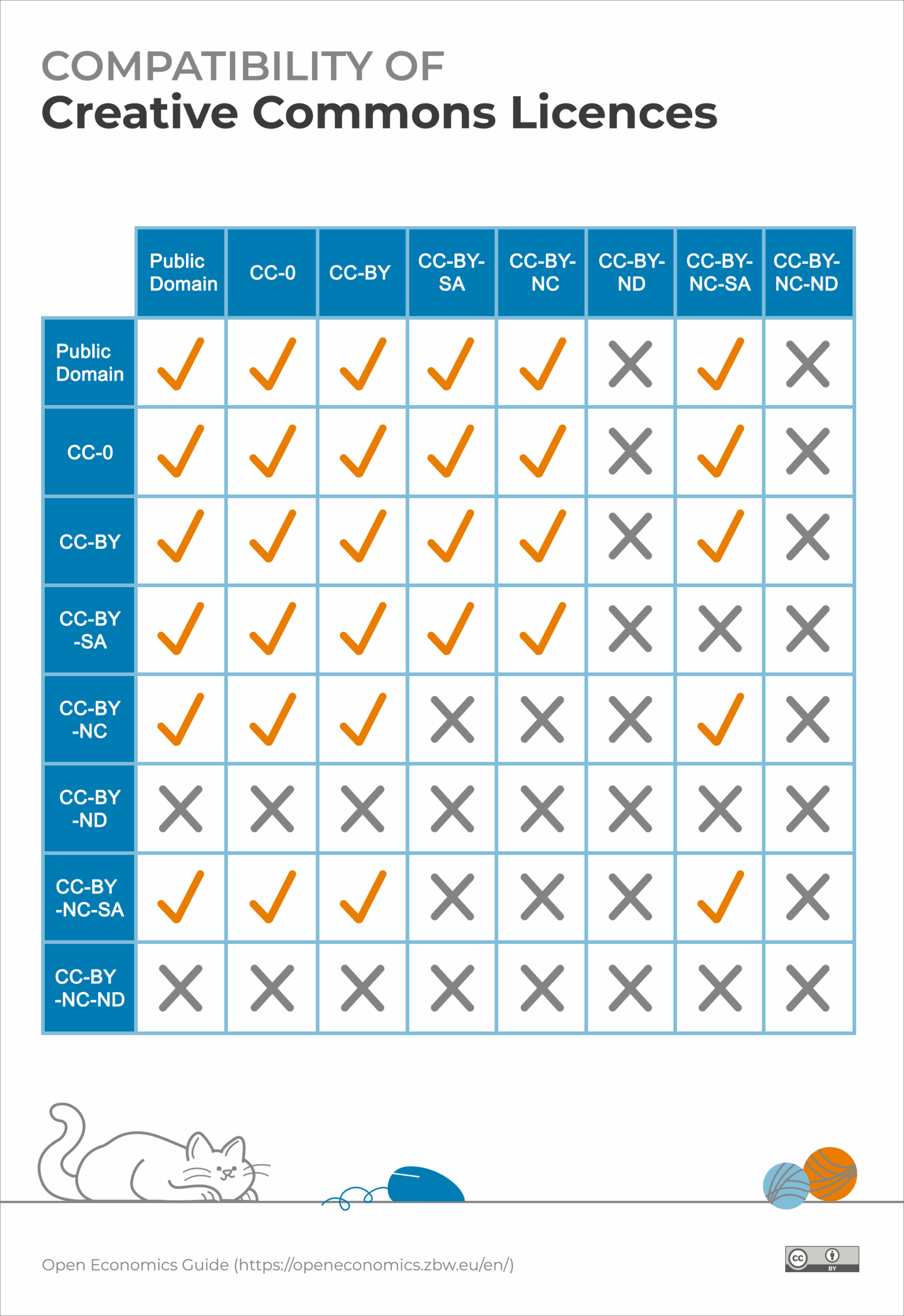Creative Commons Licences
Creative Commons licences grant users the legal and free use of materials and directly inform them about what they are allowed to do with the content under which conditions.
The CC-BY (Attribution) licence is the most common for research data. For the creation of Open Educational Resources, the following licences are recommended by the OER community as they allow the content to be reused and republished: CC 0 (allows content to be reused as if it were already free of copyright) and CC-BY (attribution).

The Creative Commons Licence Spectrum maps the different licences. They range from the greatest possible degree of openness to full legal "copyright" protection. Especially in the area of open educational materials, it is important that licence conditions are as free as possible. For this reason, restrictive licences with the building blocks "ND" ("No Derivatives", no editing allowed) as well as "NC" (Non-commercial, no commercial use) are rather unsuitable (German). The vague definition of commercial use leads to the fear of violating licensing regulations, especially in the field of education, which is why these resources are often not used even in the case of clearly non-commercial use. The Creative Commons Licence Chooser supports you in choosing the correct licence.
When re-using materials from others, the CC Licence Compatibility Chart (table below) can be helpful to compare the possible combinations of licences. In the case of different licensing of the source works, all licences that occur must be listed individually in the case of simple use. In the case of a fusion of content and in the case of editing and modification, a new independent work is created. The licence that may be granted here depends on the material that is subject to the most restrictive conditions.

Creative Commons offers a free download for the icons. You should either attach the icon (for example "CC BY") together with a reference to the licence version to your material (for example "CC 4.0") or state this in writing (for example "CC BY 4.0"). You should link this to the long version of the licence text.